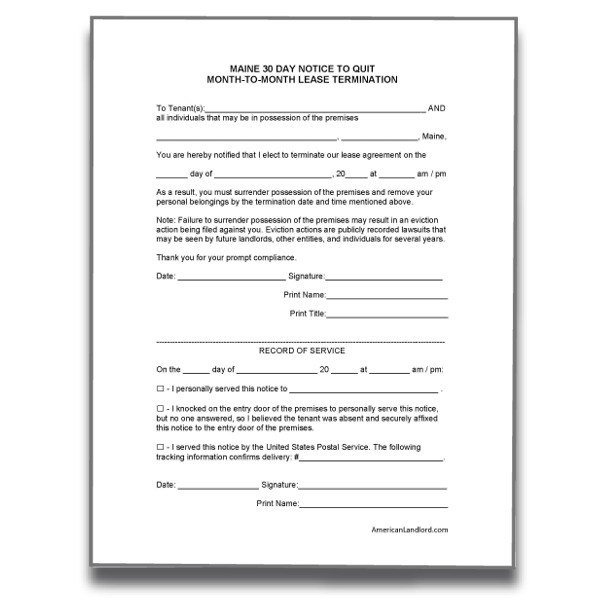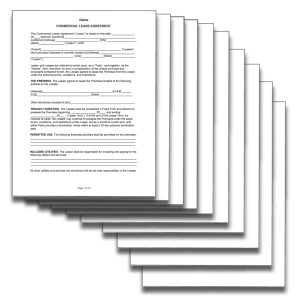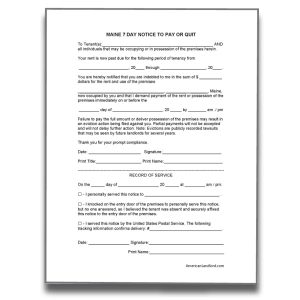When a landlord wants to end a short term tenancy-at-will, they may serve a tenant with a Maine 30 Day Notice to Quit. If the tenant doesn’t act by the end of the 30th day, the landlord may file an eviction lawsuit for holding over.
What Does Maine Law Say?
How to Fill Out
Step 1 – Write the name(s) the tenant(s).
Step 2 – Add the rental property address.
Step 3 – Give a deadline (at least 30 days) when the tenant must vacate.
Step 4 – Sign and date.
Step 5 – Serve the tenant with the notice and complete the record of service section stating who, how and when the tenant was served.
• Nonpayment of Rent: 7 days. § 6002(1)(C)
• Noncompliance: 7 days. § 6002(1)(B)
• Termination (Month-to-Month Lease): 30 days. § 6002)
• Eviction Lawsuit: Forcible Entry and Detainer. Chapter 709: Entry and Detainer
Please read our Terms of Use. AmericanLandlord.com is not a substitute for consulting with a legal professional specializing in landlord-tenant law.



